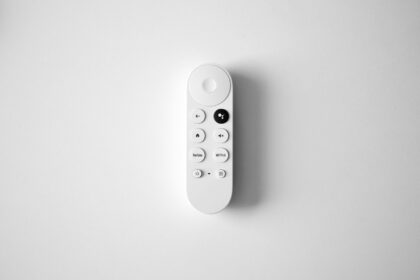Quick clarity for upgrades and support. This short guide shows practical ways to get exact motherboard model and manufacturer information on a modern computer. Start with built‑in tools like Microsoft’s System Information (msinfo32) or a simple command prompt call using WMIC.
Third‑party software such as CPU‑Z or HWiNFO gives deeper detail when system reports are vague. The easiest way may be a system utility that lists board name, BIOS version, and part number in seconds.
When software falls short, check UEFI/BIOS with common keys (DEL, F2, F12), inspect the printed model on the PCB inside the case, or review the original box and receipts from retailers. Note that prebuilt vendors and laptops often hide full identifiers, so consult vendor docs if needed.
What this section delivers: clear choices, when each tool or approach fits, and the exact fields to record so support pages and compatibility checks go smoothly.
• Use msinfo32 or WMIC for fast system info.
• Try CPU‑Z or HWiNFO for detailed reads.
• Open the case or check receipts when software lacks details.
Why your motherboard model matters for upgrades and troubleshooting
Your system’s core board determines supported CPUs, memory, and expansion. That single detail sets limits on processor choices, RAM type and capacity, storage slots, and PCIe lanes. Knowing the exact model prevents buying incompatible parts and saves time.
Practical effects: chipset and board design dictate overclocking ability, onboard audio, USB counts, and Wi‑Fi options. A proper model lookup helps locate the correct BIOS and driver downloads on the maker’s support site.
When planning upgrades such as a new graphics card or a larger memory kit, check slot generation, physical clearance, and power delivery. Some CPU swaps need a BIOS update first; grabbing the right firmware for the model avoids bricked systems.
- Match RAM type (DDR4 vs DDR5), speed, and capacity limits.
- Confirm PCIe generation and M.2 slot count for NVMe drives.
- Review VRM layout and BIOS revision for stability under load.
| Upgrade Area | Model-dependent Factor | Why it matters | Where to check |
|---|---|---|---|
| CPU | Socket and supported microcode | Ensures compatibility and performance | Manufacturer support page, BIOS notes |
| Memory | Type, speed, max capacity | Prevents mismatched modules and instability | Board specs and QVL list |
| Graphics card | PCIe generation, slot spacing | Affects bandwidth and physical fit | Spec sheet and case layout |
| Storage | M.2 count and lane sharing | Limits NVMe setups and RAID options | Product manual and BIOS storage page |
Use Windows System Information to quickly find BaseBoard details
Windows includes a built‑in System Information utility that lists the baseboard and related hardware at a glance. Press Windows+R, type msinfo32, and press OK to open the tool. Microsoft labels the motherboard as BaseBoard on the opening screen.
Open System Information from the Start menu or search bar
Launch the utility from the start menu or the search bar for a fast, no‑install lookup. The same page shows OS and processor info, which helps confirm the report belongs to this computer.
Locate BaseBoard Manufacturer, BaseBoard Product, and BaseBoard Version
On the main panel, scroll until you see BaseBoard entries. Note the BaseBoard Manufacturer, BaseBoard Product, and the Version or revision number—examples read like “ASUS ROG Maximus Z690 APEX Rev 1.xx.”
Cross‑check RAM, CPU, and OS details shown on the same panel
Use the panel data to confirm installed RAM, the CPU model, and the Windows version. If BaseBoard fields are empty or inaccurate, move on to the command tool or third‑party software listed later in this guide.
- Record the exact product string and model name for driver or BIOS searches.
- Capture a screenshot of the BaseBoard panel and label it with the PC name for reference.
- Because this tool is part of Windows, it often provides the simplest information motherboard basics without extra software.
Find your motherboard with Command Prompt
A quick command in Windows can return the board maker and product string without installing extra software. Open a command prompt from the Start Menu or the search bar for a fast, no‑install lookup.
Run the WMIC instruction: wmic baseboard get product,Manufacturer
Type the following and press Enter:
wmic baseboard get product,Manufacturer
The console typically prints the manufacturer and the product line in one row. Copy that exact model string and save it for support searches or driver downloads.
If results are blank or inaccurate, try other methods
Blank fields or generic output mean the system did not expose full baseboard information.
- Run CPU‑Z or HWiNFO for deeper board and BIOS details.
- Check System Information and compare results for consistency.
- Inspect the PCB or vendor paperwork if software reports remain incomplete.
Tip: This small command is useful when a scripted workflow is needed. Always note the product number and spelling before downloading firmware or parts.
Leverage third‑party tools for deeper motherboard information
A small set of external utilities can pull exact product strings, chipset data, and BIOS release notes.
CPU‑Z shows the Mainboard tab with Manufacturer, Model, BIOS version and date, plus chipset and southbridge fields. It’s quick and easy on Windows and useful when on‑screen reports lack specifics.
HWiNFO delivers a full system report. Expect board identifiers, sensor readings, and connected device lists. Export the report for later reference before any firmware changes.
Vendor suites and what they add
Asus Armoury Crate, MSI Center, and Gigabyte Control Center will auto‑detect the product and suggest BIOS and driver downloads. These apps match a detected model to vendor support pages.
- Compare strings from different tools; they should match exactly.
- Save exported reports for support or upgrade audits.
- Check chipset fields when confirming CPU and storage compatibility.
| Utility | Key fields | Best use | Output format |
|---|---|---|---|
| CPU‑Z | Manufacturer, Model, BIOS version/date, Chipset | Quick model verification | On‑screen + save screenshot |
| HWiNFO | Board ID, sensors, devices, chipset details | Deep system analysis and logging | Exportable report (TXT/HTML) |
| Vendor Suites | Product detection, BIOS updates, driver links | Vendor‑specific downloads and updates | App interface with update prompts |
Check UEFI BIOS for motherboard model and BIOS version
Booting into the firmware gives the most reliable product and firmware readout. Enter the UEFI setup during startup and read the model string and BIOS build shown on screen.
Entering firmware during POST
Reboot and press DEL, F2, or F12 as the system posts. Some fast‑boot systems skip the prompt, so using a vendor restart utility that reboots directly into the firmware menu can help.
Where to look inside the UEFI
The EZ Mode or landing panel usually lists the motherboard model and current bios version prominently. If that screen lacks full details, open the BIOS update or flash utility (for example, EZ Flash or Q‑Flash).
- Capture the exact BIOS version number as displayed. This helps compare against downloads on the support site.
- Check the update/flash page; it often repeats the board model and current build for clarity.
- Disable Windows fast startup if you miss the key prompt; this gives more time at boot.
- Make sure not to change settings unintentionally — note values before leaving the firmware.
Tip: Firmware is a dependable source for system identification when OS tools return blank or generic information. Reading the board info from firmware reduces the risk of mixing similar models.
Offline ways to identify your board when Windows won’t boot
If Windows refuses to boot, there are reliable offline methods that still reveal the exact board model. These steps work for a dead system or a machine that won’t load the OS.
Start with packaging and paperwork. The retail box normally lists the full model name and revision. Manuals repeat that product string and often include support URLs and the exact part number.
Check receipts and order history
Look through online accounts at Amazon, Newegg, or Best Buy. Order records usually show the product title used at purchase. Save a screenshot or print the page for future reference.
Open the case and read the silkscreen
Power down, unplug, and ground yourself before touching components. Inside, the PCB often has a silkscreened model near the first PCIe slot or the CPU socket. Some prints sit beneath the primary graphics card and may require card removal.
- Write down the full model number and any revision marks.
- Cross‑check PCB text against the box and receipts to avoid mixing similar models.
- Keep the box, manuals, and receipt together for easy reference later.
| Source | What it shows | When it helps |
|---|---|---|
| Retail box / manual | Full model name, revision, part number | When OS tools are unavailable |
| Order history | Product listing used at purchase | Quick recovery of product string |
| Printed silkscreen on PCB | Board model and revision on the hardware | When paperwork is missing |
These offline ways find the information you need without software. Record the exact name and number so future driver or BIOS searches match the correct motherboard.
How to Find Out What Motherboard You Have on prebuilt desktops and laptops
Prebuilt systems often ship with either a standard retail board or a vendor‑specific design that affects upgrade choices. That difference changes what parts fit, how much documentation exists, and which upgrades are practical.
Prebuilt desktops: standard versus proprietary designs
Standard retail boards use common layouts and clear model strings. They let users swap parts and find BIOS updates on the maker’s site.
Proprietary boards from big brands often hide connectors or use custom power headers. Expect limited manuals and chipset‑level guidance rather than full spec sheets.
- Confirm the board string via stickers or vendor utilities.
- Plan upgrades around chipset capability when the model is proprietary.
- For standard boards, follow the same identification steps used for custom builds.
Laptops: limited identifiers and reliable sources
Laptops rarely expose a full board model on the PCB. Use Windows System Information and the maker’s service manual for supported memory, storage, and wireless parts.
Check vendor support pages or included utilities for the system model and the motherboard manufacturer. This lets you learn which upgrades are serviceable without disassembly.
| System | What to expect | Best source |
|---|---|---|
| Prebuilt desktop (retail) | Full model, easy upgrades | Manufacturer site, BIOS |
| Prebuilt desktop (proprietary) | Limited docs, custom headers | Vendor support, chipset notes |
| Laptop | Hidden board model, practical RAM upgrades | Service manual, system information |
Keep vendor docs and exact model strings handy when ordering parts. That prevents buying incompatible RAM or other hardware and saves time during upgrades.
Next steps after identifying your motherboard
After confirming the exact model string, next steps focus on compatibility checks and firmware updates.
Verify component compatibility
Check motherboard limits for RAM capacity, supported memory speeds, and the vendor QVL before buying modules.
Confirm M.2 slot types and lane sharing, plus PCIe generation for a new GPU or add‑in card.
Review the chipset notes for features that affect NVMe, RAID, or overclocking.
Visit the manufacturer support page
Go to the exact product support page for drivers, manuals, and the latest bios files.
Record the current bios version number and compare it with release notes for fixes you’re looking for.
Safety and flashing notes
Make sure BitLocker is disabled before updating bios; re‑enable it after a successful flash.
Typical flow: download the correct file, copy it to USB, boot into firmware, open the flash utility, select the file, and let it finish without power loss.
| Action | Why it matters | Quick check |
|---|---|---|
| RAM upgrade | Prevents mismatched memory and instability | Consult QVL and max capacity |
| M.2 or storage | Slot type and lane sharing affect NVMe setups | Check slot specs and BIOS detection |
| BIOS update | Adds CPU support and fixes firmware bugs | Match file to model and note version number |
| CPU swap | May require specific BIOS revision | Confirm CPU list on support page |
Final notes: keep a record of files and steps, ground yourself before touching components, and make sure cables and boot order are correct after any change.
Conclusion
Keep a clear record of the exact model name shown in system screens and firmware before making changes.
Quick recap: use System Information (msinfo32) for BaseBoard Manufacturer and BaseBoard Product, run the command prompt line for a fast check, or run CPU‑Z and HWiNFO for deeper BIOS and chipset information. The UEFI menu often lists the board model and current bios version.
When software reports are vague, consult the product box, order history, or read the printed name on the PCB. Prebuilt desktops and many laptops may need vendor pages for full details.
Always verify the exact product string on the manufacturer support page before downloads or flashes so hardware changes go smoothly.
FAQ
What’s the easiest way to see my baseboard manufacturer and product in Windows?
Open System Information from the Start menu or search bar. Look under System Summary for BaseBoard Manufacturer, BaseBoard Product, and BaseBoard Version. The same panel also lists CPU, installed RAM, and OS details so you can cross-check everything at once.
Which Command Prompt command shows motherboard details?
Run the WMIC command: wmic baseboard get product,Manufacturer. It prints the board maker and model. If the output is blank or generic, try System Information, BIOS, or a third‑party tool for more accurate data.
Can third‑party tools give deeper motherboard info?
Yes. CPU‑Z’s Mainboard tab shows Manufacturer, Model, and BIOS version/date. HWiNFO provides a full system report including chipset and board details. Manufacturer suites like Asus Armoury Crate, MSI Center, or Gigabyte Control Center can also report board specifics and firmware updates.
Where in the UEFI BIOS can I find the board model and BIOS version?
Enter BIOS using common keys such as DEL, F2, or F12 during boot. Look in the EZ Mode overview or on BIOS update/flash pages for the model name, vendor, and BIOS version/date. Those screens are reliable when Windows won’t boot or system tools fail.
My PC won’t start. How can I identify the board offline?
Check the original box, manual, or purchase receipt (Amazon, Newegg, Best Buy). If those aren’t available, open the case and read the silkscreened model name and manufacturer printed on the PCB near the CPU socket or RAM slots.
Are prebuilt desktops and laptops different when identifying the board?
Yes. Prebuilt desktops often use standard or proprietary boards—standard boards show clear model names while proprietary designs may use vendor part numbers. Laptops usually expose limited identifiers; rely on System Information and vendor documentation or enter the BIOS for model details.
After I know the board model, what should I check next?
Verify compatibility for RAM type and speeds, storage slots (SATA vs M.2), GPU fit and power, and chipset‑dependent features like PCIe lane allocation. Visit the manufacturer’s support page for drivers, BIOS updates, and manuals before buying upgrades.
Any safety notes when checking or flashing BIOS and handling hardware?
Back up data and suspend BitLocker or encryption before flashing BIOS. Use only official firmware and follow vendor instructions. Power down and ground yourself when handling internal parts, and avoid forcing connectors. If unsure, seek professional help.
What if System Information or WMIC shows unknown or generic results?
Try CPU‑Z or HWiNFO for a detailed readout. If still unclear, check BIOS, the board’s silkscreen, or vendor support pages. For laptops and some prebuilt PCs, contact the manufacturer with the service tag or SN for precise identification.
























